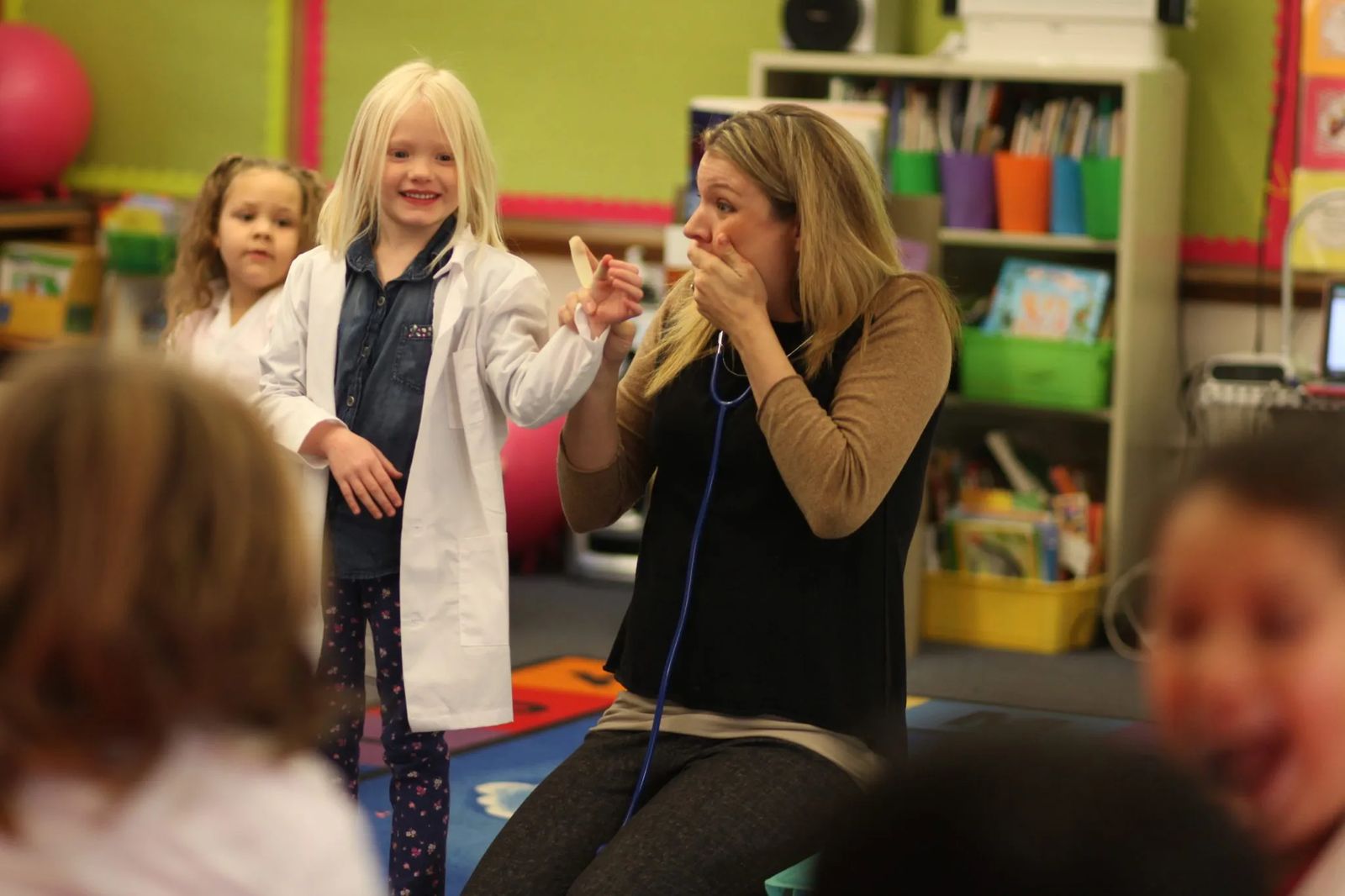
Project Lead the Way
Educating the next generation of scientists and engineers
Mrs. Soucy’s kindergarten class is filled with scientists. Donning their lab coats, these Washington Elementary students are ready to experiment.
“We are going to try to find out why we have so many bones,” says Soucy.
Students take their seats, eager to start. Before them are rolls of masking tape, peg blocks, and foam pegboards.
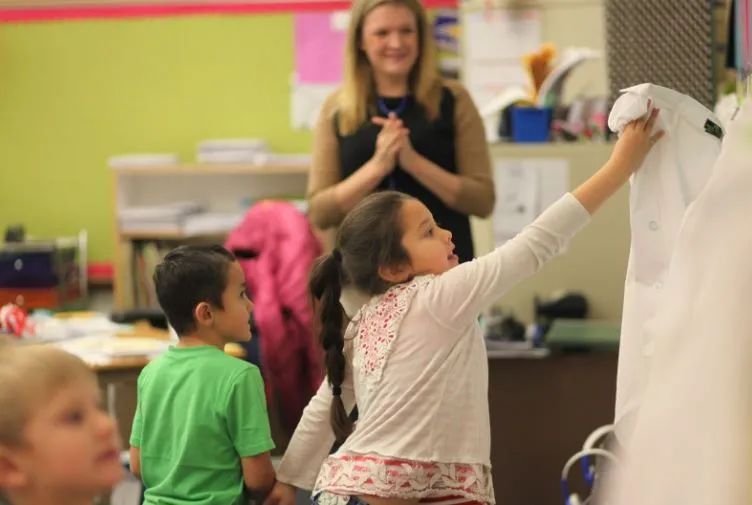
“They love the lab coats,” says kindergarten teacher Melissa Soucy, who has a stethoscope draped from her neck.
Soucy helps half the students wrap masking tape around the joints of their fingers. As they attempt to bend their joints, they laugh and exclaim, “I can’t move my fingers!”
The young scientists are then given 20 seconds to place as many peg blocks in the foam board as possible. The result: Students with full use of their joints were able to place more blocks in the pegboard.
After unwrapping their fingers, Soucy asks, “So, why do you think we have so many bones in our bodies?”
So you can color!” exclaims Zayden Watts, who had just stopped coloring in a book to examine his fingers.
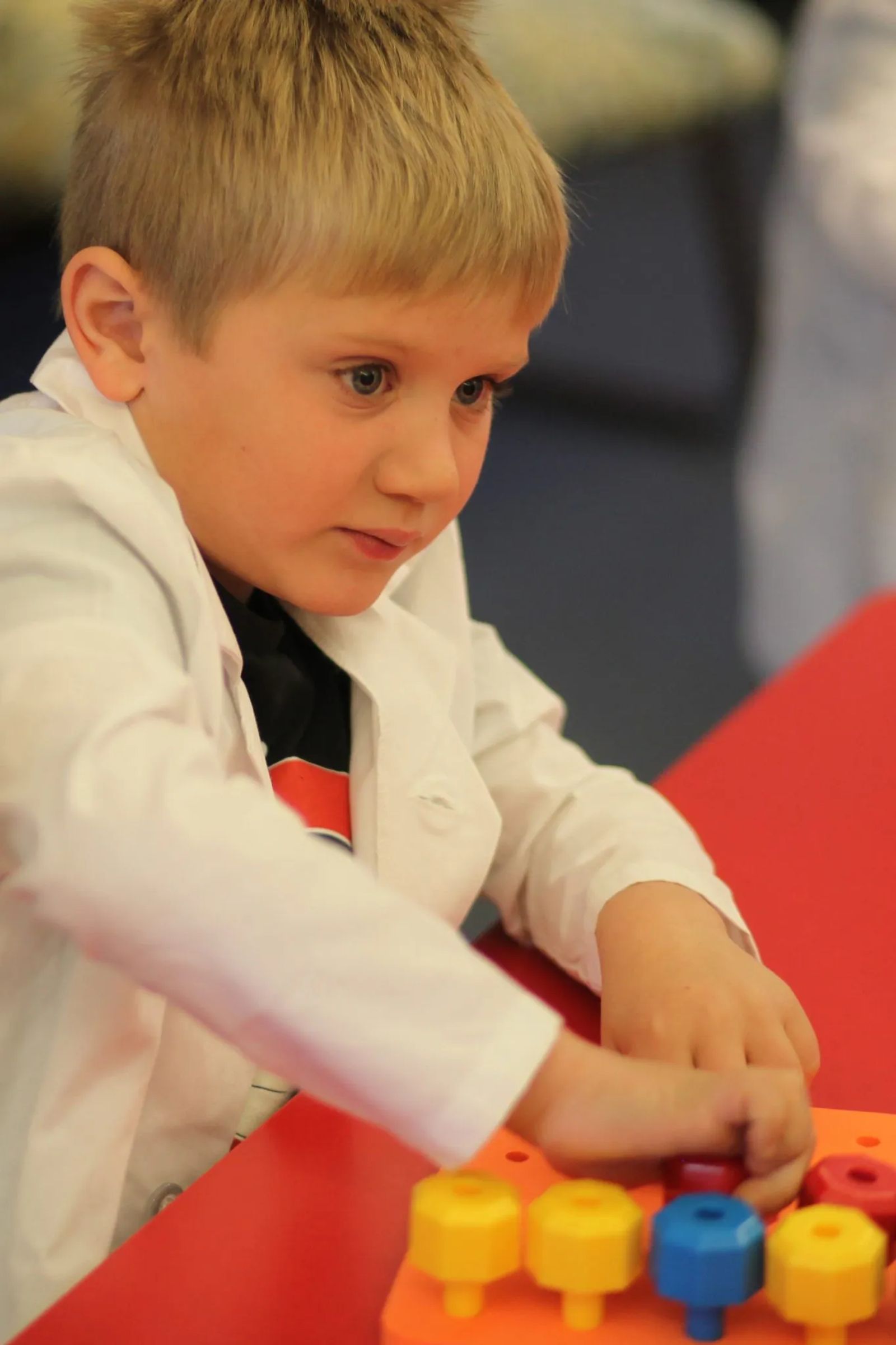
“So we can move!” observes Emrie Francom.
“If I took away your bones, would that be easier or harder?” questions Soucy.
“Harder!” the class exclaims.
Such a hands-on approach to science is part of a course of study designed by Project Lead The Way, touted as the nation’s leading provider of science, technology, engineering, and math (STEM) curricula.
Project Lead The Way noticed Soucy’s enthusiasm for teaching and inspiring others right away. That’s why she is one of 23 teachers selected by the national nonprofit organization to teach the curriculum to other educators nationally. As a Project Lead the Way Master Lead Teacher, she spends her summers traveling and teaching others how to inspire their students. She’s been from Texas to Kansas to Oregon and places in-between.
Soucy’s students are in the midst of the biomedical unit exploring the relationship between structure and function of bones and organs in the human body. Using balloons and straws, they explore lung functions. They begin to understand the body’s bones by assembling a magnetic skeleton, working through interactive lessons on iPads, and building a mock x-ray of their hands. The lesson culminates in a project where they design and build a cast to aid in the healing of a broken bone.
“They are learning what doctors go through to solve a problem,” Soucy says. These young scientists will be tasked with creating a cast that is sturdy, comfortable, and water resistant. They’re given a plethora of supplies: bubble wrap, cotton balls, feathers, Saran wrap, dowels etc. Students draw a design, share with their classmates and then evaluate and modify their designs before testing them in the classroom.
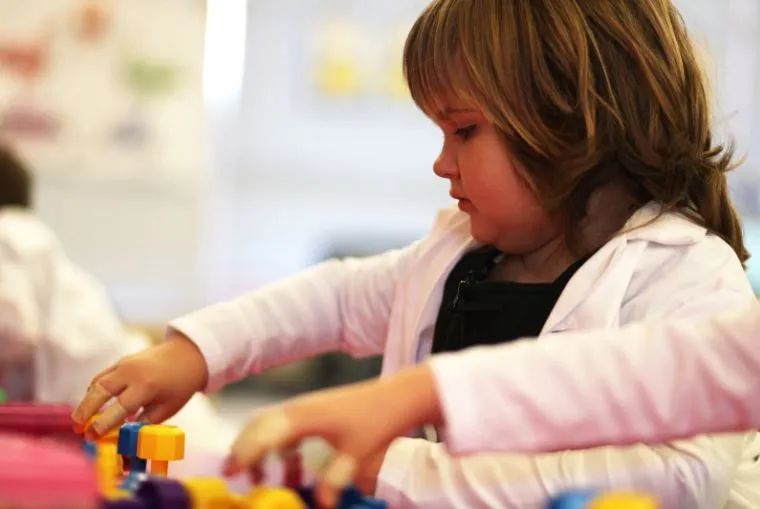
“The U.S. is so far behind in science and math education compared to other countries,” says Deedee Larsen, principal at Washington Elementary. “That this was a viable curriculum that would prepare our students to be successful in this world interested us.”
Initiatives to engage and interest students in the fast-growing STEM fields have been present in junior high and high school programs. But research indicates children leaving elementary school already have a concept of what they can do and be when they grow up.
“This shows them a path and gives them the idea that they can be successful doing anything they want,” Soucy says. “They can follow their interests.”
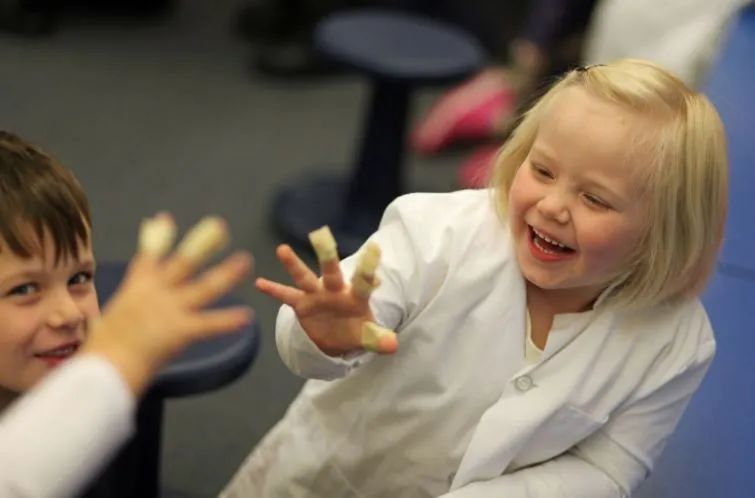
Dan Carter, spokesperson for Exxon Mobil, a major financial sponsor for Project Lead The Way, believes it is important to help children understand these opportunities for their future in elementary school.
“It not only helps on the local level to keep engineers and designers in the workforce pipeline, but helps the community in general,” Carter says. “They can take those inquiry-based skills anywhere and be successful.”
Washington Elementary was selected as part of a nationwide pilot for Project Lead The Way’s elementary school curriculum in 2014. The district rolled out the program to five elementary schools the following year, and now all but two elementary schools implemented the program.
The benefits were recognized almost immediately.
“It meets their creative side, their mechanical side—everyone becomes an engaged learner,” Larsen says. Students were asking to skip recess to work on lessons, describing the process as fun. “You don’t go into any classroom and see a kid yawning. You see them engaged and excited.”
The STEM program, Soucy says, isn’t your typical “pull-out-a-manual and teach from it” curriculum with textbooks and worksheets. “It’s a complete 180 from how we teach. We are not telling them things, we are making them discover them.”
“A teacher becomes more of a leader,” Larsen adds. “You’re guiding, and the students become the teachers to each other.”
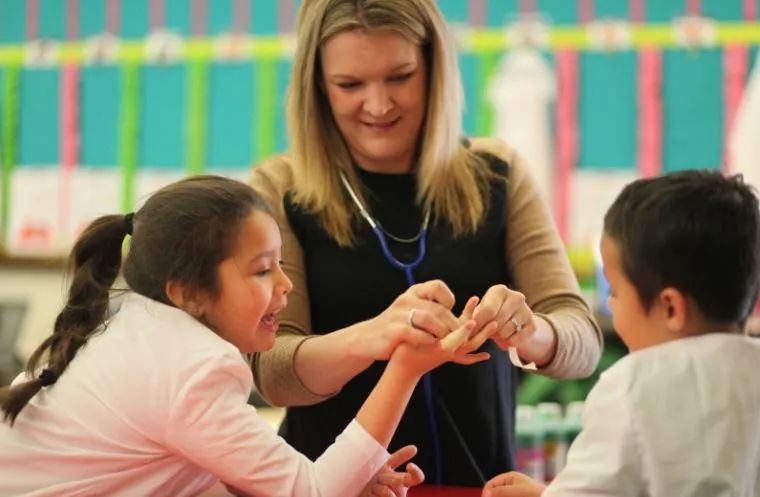
Larson admits some of the older science teaching materials haven’t been updated in 30 or more years. “When I was teaching science, we had a book or weekly reader. We read about butterflies, their migration patterns, and filled out a worksheet, and that was science.” Now students are making butterfly houses and chrysalises. “It just makes it so real,” Soucy says. “We are building, creating and designing.”
Each elementary school participating in Project Lead The Way has two lead teachers plus an administrator that is trained to provide support and development to the staff. Teachers go through a rigorous online training process and participate in all activities before the curriculum is released to them.
Within each lesson, students are presented with a scenario and a problem to solve through a design and inquiry process. Students have to plan their solution, sketch and design it, and then they get to build and test it. They then evaluate their solution and go back and redo what isn’t working.
“Most of them come up with tools that are pretty darn creative,” Soucy says.
Underperforming students and those who struggle in a traditional learning environment seem to gravitate to this hands-on approach. Modeled after STEM careers where learning from mistakes is part of the process, this approach helps them understand failure is okay. When they fail, they try again.
“It’s taking away some of that stigma, that attitude that, ‘I don’t need this,’ or, ‘What is the point?’” says Larsen, who herself hated math as a child—a sentiment she attributes to the prevailing mindset that girls aren’t good at math. “When it’s an algebraic equation that you use to get your robot to run, it puts it into real life.”
Locally, PLTW is funded with private and public donations and includes all but two public elementary schools in Billings (funding is still being sought for Central Heights and McKinley). Community partners—including major sponsors Exxon Mobil, Phillips 66, CTA, and First Interstate Bank—fund PLTW.
“Community involvement has been very significant,” says Larsen.
Architecture and engineering firm CTA supports and contributes to STEM education because “it directly supports our disciplines within architecture and engineering,” says Brad Sperry, one of the associate principals with CTA. “Our commitment to the education system that drives our industry is vital. The second graders of today that are passionate about math and science need the support to follow their dreams into a career path that could lead them to become part of our team of the future.”
“For us, it’s a workforce development imperative,” says Carter, of Exxon Mobil.
The company is supportive of this STEM-based curriculum, as it spikes a curiosity in the area’s youngest citizens for what Carter terms “inquiry-based career opportunities.” He adds, “Our kids in Billings deserve the same opportunities that kids anywhere else do to be successful.”
A Changing Work Force
Why STEM is critical to the Magic City
As the largest city within a 500-mile radius, Billings is a major healthcare hub. Two hospitals—Billings Clinic and St. Vincent Healthcare—and more than 40 medical clinics make up the city’s medical corridor. Billings Clinic is the largest employer in Yellowstone County.
In the next 10 years, 32,500 job openings are forecasted in Yellowstone County, and 11.7% of those openings will be in healthcare, according to Big Sky Economic Development.
Job growth and demand will also be high in retail, accommodations, and food service, followed by construction and “professional, scientific, and technical services.”
Filling those jobs will be a major challenge. Brittney Souza, director of BillingsWorks, says most of the job openings Yellowstone County will have in the next 10 years are replacement positions due to retiring workers. “Only about 8,000 are due to growth,” Souza says. “Businesses are struggling just to find workers to maintain their current levels.”
As boomers retire and leave the workforce, there is a smaller generation to replace them. Shifting demographics, compounded with a growing economy provide a high level of competition for qualified workers.
“The top payers take the talented workers and create a high degree of competition,” Souza says. “This is felt in places like Montana where we lose a high number of our college graduates to out of state companies who are offering much higher wages.”
According to a 2016 Employer Survey by BillingsWorks, 62% of Yellowstone County businesses report a lack of available workers negatively impacts business growth.
“As we look to the jobs of the future and the fastest growing industries, a majority of them are STEM related,” Souza says. “Also, the largest gaps in trained workforce to job openings are mostly STEM related. The more we can do to get kids exposed to these fields, the better.”














